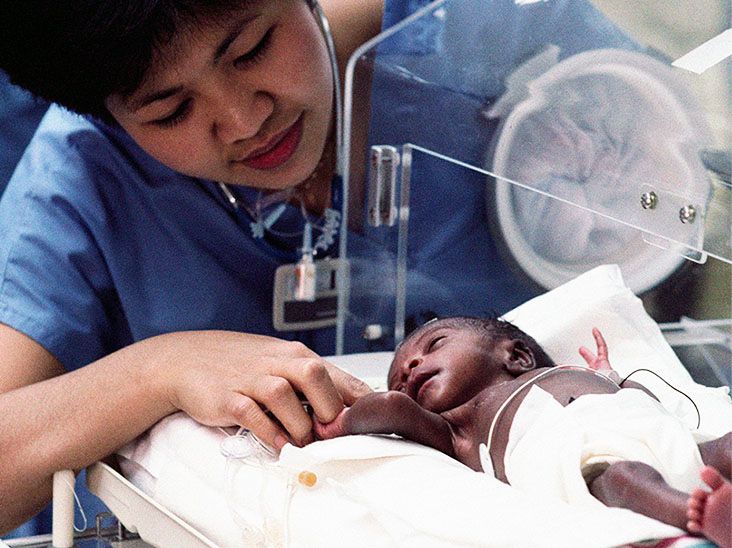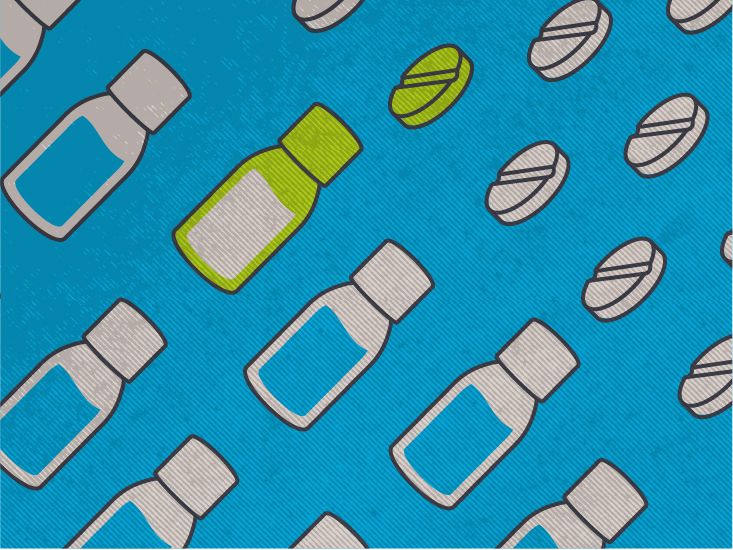Wondering if that sudden fatigue, a painful swelling in your hand, or an unexpected bout of chest pain could be linked to sickle cell? The short answer is yesthose are classic sickle cell symptoms, and they can show up at any age. Below we break down the most common warning signs, why they happen, and when you should call a doctor.
I'm a boardcertified hematologist who's spent the last 15years helping patients navigate the ups and downs of sicklecell disease. I've seen families relieved when they finally recognized a symptom, and I've watched the same symptom spiral into a crisis when it's missed. Let's walk through what you need to know, together.
Quick Symptom Checklist
Here's a fasttrack list you can keep in your pocket or on your phone. If any of these pop up, take note and consider reaching out to a healthcare professional.
- Anemiarelated fatigue & pallor feeling wiped out even after a full night's sleep.
- Sicklecell pain (crises) sharp, throbbing pain in the chest, back, arms, or legs.
- Handfoot swelling (dactylitis) puffy, tender hands or feet, especially in young children.
- Frequent infections recurring colds, pneumonia, or urinary tract infections.
- Delayed growth & puberty falling behind peers on height or developmental milestones.
- Vision problems blurry sight, eye pain, or sudden loss of vision.
- Redflag emergencies fever above 101.5F, sudden weakness, chest pain, or difficulty breathing.
All of these fall under the umbrella of sickle cell symptoms. Spotting them early can make a world of difference.
Why Symptoms Appear
How SickleShaped Cells Disrupt the Body
The root cause is a tiny mutation in the hemoglobin gene (HbS). When oxygen levels drop, red blood cells harden into a crescent shape, just like a sickle. These rigid cells jam tiny blood vessels, cutting off oxygen to tissues. The result? Pain, organ damage, and the classic anemia that leaves you feeling exhausted.
The Role of the Spleen & Immune System
Because those misshapen cells get trapped in the spleen, the organ gradually loses its ability to filter bacteria. That's why infections pop up more often in people with sicklecell disease. A healthy spleen is like a vigilant security guard; a compromised one is an open door for invaders.
Trait vs. Disease What's the Difference?
Carrying one copy of the HbS gene gives you the sickle cell trait. Most carriers never experience symptoms, but under extreme dehydration or high altitude they can develop a mild pain episode. Having two copies means you have sickle cell disease, which brings the full spectrum of symptoms listed above.
Detailed Symptom Guide
| Symptom | What It Looks/Feels Like | How to Recognize It | When to Seek Care |
|---|---|---|---|
| Anemia / Fatigue | Pale skin, shortness of breath, constant tiredness | Low hemoglobin on blood test; everyday feeling of "being wiped out" | If fatigue interferes with daily life or appears suddenly |
| Sicklecell Pain (VOC) | Sharp, throbbing pain in bones, chest, abdomen; often worsens at night | Often triggered by dehydration, cold, stress | Severe pain >4hours, unrelieved by OTC meds ER |
| Hand/Foot Swelling (Dactylitis) | Puffy, warm, tender extremities; may look "rubbery" | Usually first symptom in infants (612months) | Persistent swelling or fever pediatrician |
| Frequent Infections | Repeated colds, pneumonia, ear infections | Low fever, cough, rapid breathing | Fever >101.5F or worsening symptoms doctor |
| Growth / Puberty Delay | Belowaverage height/weight, late teen milestones | Compare growth charts to peers | Discuss with pediatric endocrinologist |
| Vision Problems | Blurred vision, floaters, eye pain | Sudden change in sight, especially in kids | Immediate ophthalmology or ER visit |
| RedFlag Emergencies | Strokelike weakness, chest pain, priapism lasting >4hrs | Onesided weakness, severe chest discomfort, painful erection | Call 911 or go to ER |
Seeing any of these symptoms? Write them down, note when they started, and share the list with your healthcare team. A detailed symptom diary can turn a vague feeling into a concrete discussion.
Managing and Reducing
Everyday Lifestyle Tips
Simple habits can keep crises at bay. Drink plenty of wateraim for at least two liters a dayto keep blood thin and flowing. Avoid extreme temperatures; a sudden chill can trigger a pain episode. And, yes, moderate exercise is greatjust stay hydrated and don't push yourself to the limit on a scorching day.
Medical Interventions That Work
For many, medication makes the difference between occasional pinchpoints and constant agony.
- Hydroxyurea boosts fetal hemoglobin, softening the sickle shape. A study in the National Heart, Lung & Blood Institute shows it reduces pain crises by up to 50%.
- Voxelotor directly increases hemoglobin's affinity for oxygen, easing anemia.
- Crizanlizumab a newer drug that blocks the cells from sticking together, cutting down on vasoocclusive events.
- Blood transfusions reserved for severe anemia or stroke prevention; they replace sickle cells with healthy ones.
- Bonemarrow or gene therapy still emerging, but already offering hope of a cure for some patients (according to Mayo Clinic).
When to See a Doctor: Urgent vs. Routine
Urgent red flags: high fever, sudden weakness, chest pain, difficulty breathing, or priapism lasting more than four hours. These call for immediate emergency care.
Routine followups: most patients benefit from a checkup every three to six monthsblood work, organ function screens, and a conversation about any new symptoms.
RealWorld Stories
Jordan, 12 was playing soccer when a sudden calf pain sent him to the ER. He'd skipped his water bottle during practice and felt the "cramp" turn into a fullblown crisis. His doctors administered IV fluids and pain medication, and a quick reminder to stay hydrated saved him from another episode that weekend.
Maria, 28, pregnant, faced a tough decision: continue her sicklecell disease medication during pregnancy or risk painful crises. With the guidance of a maternalfetal specialist, she stayed on a carefully adjusted dose of hydroxyurea, attended biweekly blood checks, and delivered a healthy baby. Her story underscores how collaboration between hematology and obstetrics can turn a potentially risky pregnancy into a success.
These anecdotes aren't just stories; they're proof that knowing the symptoms and acting early can change outcomes dramatically.
Resources and Further Reading
For deeper dives, these trusted sites offer uptodate information:
- Mayo Clinic Sickle Cell Anemia Symptoms
- CDC Sickle Cell Disease Facts
- NHLBI Sickle Cell Disease Overview
- Cleveland Clinic Treatment Options
If you'd like a printable version of the symptom checklist, just scroll to the bottom and click "Download PDF." Keeping that sheet on your fridge or in your phone bag can be a lifesaver.
Conclusion
Recognizing sickle cell symptomsfatigue, pain crises, swelling, infections, and vision changesearly can dramatically improve quality of life and prevent serious complications. Balance is key: know the warning signs, stay hydrated, keep up with routine care, and don't hesitate to reach out when redflag symptoms appear. We've covered the science, the everyday tricks, and some realworld stories to show you that you're not alone on this journey.
What's your experience with sickle cell symptoms? Share your story in the comments, download the free symptomtracker, and if anything feels off, schedule a chat with a hematology specialist. You deserve accurate info, compassionate care, and the confidence to live fully.
FAQs
What are the earliest signs of sickle cell symptoms in infants?
Most infants first show dactylitis—painful swelling of the hands and feet—usually between 6 and 12 months, along with irritability and reduced appetite.
How can I tell if a pain episode is a sickle‑cell crisis?
A crisis typically presents as sudden, sharp pain in bones, chest, or abdomen that worsens at night, often after dehydration, cold exposure, or stress, and is not relieved by over‑the‑counter pain relievers.
When should I seek emergency care for sickle cell symptoms?
Seek immediate help for fever > 101.5 °F, chest pain, shortness of breath, sudden weakness or paralysis, severe pain lasting > 4 hours, or a priapism episode that doesn’t resolve.
Does staying hydrated really prevent sickle cell pain crises?
Yes. Adequate fluid intake keeps blood less viscous, reducing the chance that sickled cells will block tiny vessels and trigger a painful vaso‑occlusive event.
Are there any treatments that can reduce the frequency of sickle cell symptoms?
Medications such as hydroxyurea, voxelotor, and crizanlizumab have been shown to lower the number of pain crises and improve anemia; regular transfusions and emerging gene therapies are also options for selected patients.
Disclaimer: This article is for informational purposes only and does not constitute medical advice. Always consult with a healthcare professional before starting any new treatment regimen.
Related Coverage
A bone marrow transplant sickle cell can permanently cure the disease, giving patients freedom from pain crises and organ damage....
Find out which groups have the highest sickle cell disease risk, the genetics involved, and why early testing matters....
Adakveo side effects can vary from mild to serious. Learn about potential reactions, warnings, and what to watch for while taking this sickle cell treatment....
Sickle cell complications cause organ damage, painful crises, and stroke risk. Learn symptoms, triggers, and treatment options....
Hydroxyurea sickle cell therapy raises fetal‑hemoglobin, halves pain crises, improves organ health; learn dosing, benefits, safety....
Find the exact Endari dosage based on weight, how to take the powder packets, timing, side effects, and safety tips for patients....
The sickle cell malaria link shows one sickle‑cell gene cuts malaria death risk ~60%, while two copies raise risk, trigger crises....
Clear Oxbryta dosage guide with strengths, how‑to take, safety tips, and common side effects for adults and children....
Common Endari side effects, what to watch for, and simple tips to ease discomfort so you can stay on treatment confidently....
Discover the causes, symptoms, diagnosis, and management of sickle cell abdominal pain in this comprehensive guide for individuals living with this debilitating condition....









